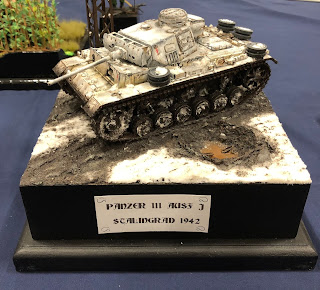Being semi-retired allows a bit more time to enjoy the sights. So, instead of hurtling back from a conference in London, we spent a few days being a tourist.
On Saturday, after my wife insisted we visit the rubbish London Bridge Experience, we went to the Tower of London. While she queued (in the rain) for the Crown Jewels, I visited the Royal Fusiliers Museum.
Passing the 25 pounder...
A 'liberated' bust of the Duce.
And of particular interest to me, caps from peacekeeping duties in Bosnia.
Having been spared the queue, I have to admit the Crown Jewels are impressive. The story of Captain Blood, does get a passing mention!
Then into the White Tower and the Royal Armouries. This is very impressive, especially as I am planning to get to the northern branch in Leeds next weekend.
English Civil War trooper.
A presentation gold plated SMG, which was used in a London murder.
If Ann Boleyn is to be believed, the armourer left a bit too much space for Henry VIII's 'crown jewels' in this suit of armour.
The Goliath and the dwarf
A striking Dragon made from various bits of arms and armour.
James II's royal armour.
They have a few breastplates!
On Sunday, I went to the football. Please to say, my team, Fulham has a number of Serbian connections, including the manager and Alexsander Mitrovic. We will pass on the score!
On Monday we went to Greenwich and the National Maritime Museum.
It has the largest ship in a bottle I have ever seen.
The Jutland room is very good.
And of course Nelson's navy gallery.
We missed the Cabinet War Rooms, as the queue was ridiculous, but the Household Cavalry Museum was a decent substitute.
And finally on Tuesday morning, The British Library. Including this Ottoman gem.


















































